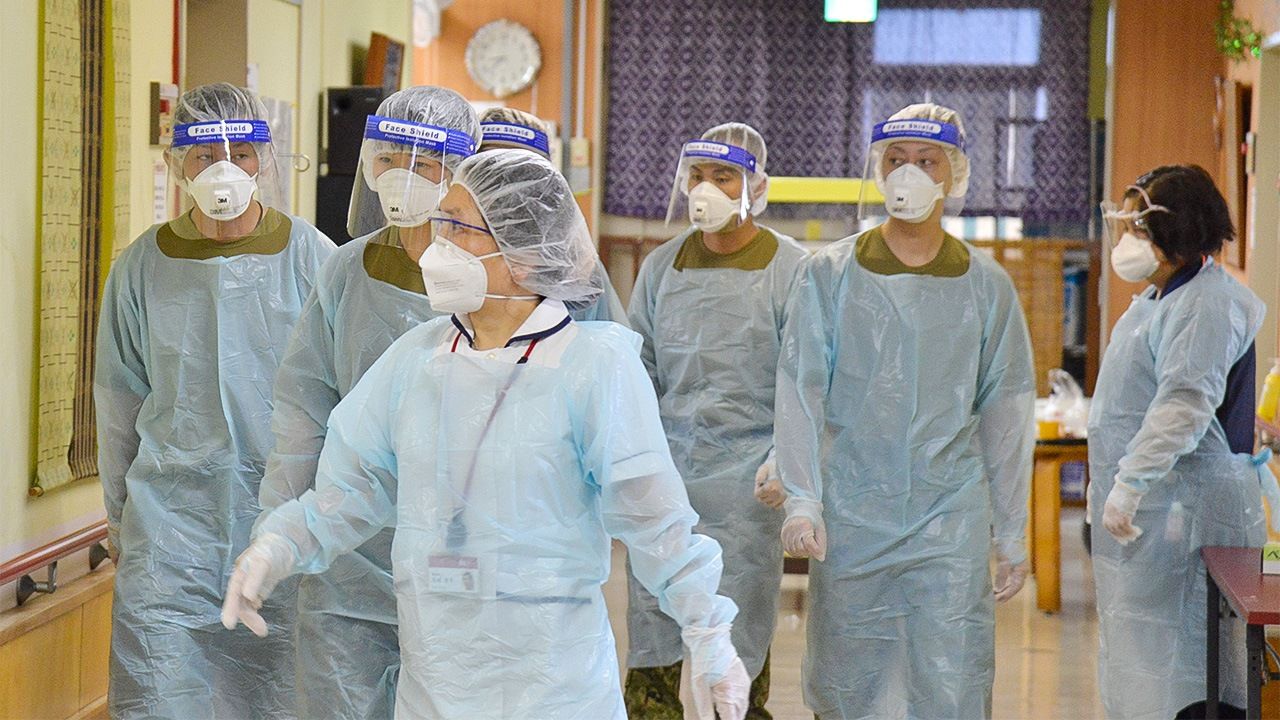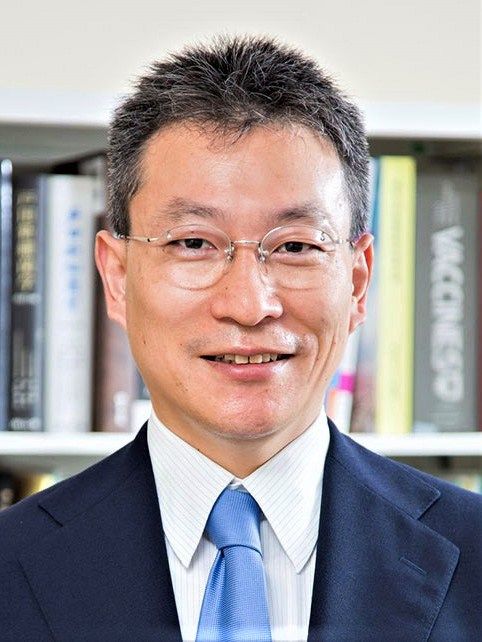
With Fewer COVID-19 Cases, Why are Hospitals Still in Crisis?
Health Society Politics- English
- 日本語
- 简体字
- 繁體字
- Français
- Español
- العربية
- Русский
The Onus of Long-Term Care
Kunishima Hiroyuki, a professor specializing in infectious diseases at St. Marianna University School of Medicine and director of the Center for Infectious Diseases at St. Marianna University Hospital, cites two factors for the near-crisis medical situation that has continued since February 8, when the state of emergency in Tokyo and its surrounding prefectures was extended by one month.
The first, he explains, is the fact that patients in critical condition do not recover quickly. “COVID-19 patients have a wide range of symptoms. The treatment is completely different for those with only minor symptoms and those in critical condition. Patients who are seriously ill can require treatment for a month or more after being hospitalized, and some may even die. Many of these patients are placed in intensive care units and require a large number of medical staff. The number of people infected with COVID-19 soared with the third wave of infections that began last autumn, but the number of seriously ill people in the hospitals has not decreased, and without available beds, a lot of people have had to remain home or stay in designated nonhospital facilities. The result has been a long waiting list of patients requiring hospitalization while hospital beds are already taken up by seriously ill COVID-19 patients. And so the strain on hospital resources continues.”

Kuhishima Hiroyuki. Infectious disease specialist, supervising physician, and professor of infectious diseases at St. Marianna University School of Medicine.
When ambulances are called for COVID-19 patients waiting at home or elsewhere who have suddenly taken a turn for the worse, there is often great difficulty finding a hospital that will take the patient due to the lack of available beds. In some cases, the patient dies before a hospital can be found.
Another characteristic of the third wave, explains Kunishima, is that the COVID-19 patients tend to be elderly. In Tokyo, over 30% of the COVID-19 patients hospitalized in February were people in their eighties or older.
“In this era of the super-aged society, community medicine in many cases involves treating elderly patients for pneumonia and senility in care facilities and in the home,” says Kunishima. “But with COVID-19 infections occurring among family members in the home and in clusters in care facilities, a larger number than usual of the elderly are being moved to hospitals. Symptoms tend to worsen easily with elderly patients, prolonging their hospital stays. This has led to a shortage of beds for new patients.
There are a number of other problems as well, he notes. “Medical protocols for COVID-19 patients are not always clear, and family caregivers—who are often also elderly—are left to fend for themselves because of their direct contact with the infected patient.”
Another problem is that even when patients recover to the point of being no longer contagious, it is hard to transfer them to another hospital or return them to the care facility they originally came from. The reason: unfounded fears that they will infect others with COVID-19. Patients who recover after long-term hospitalization generally require rehabilitation, but there are not many hospitals or facilities that will accept former COVID-19 patients, and so they end up staying where they were first hospitalized, taking up beds needed by new patients.
Barriers to Expanding COVID-19 Wards
The second problem, according to Kunishima, is the difficulty of creating new hospital wards specifically for COVID-19 patients.
According to 2018 data from the Organization for Economic Cooperation and Development, Japan has 13 hospital beds per 1,000 population, a lot more than the 4.7 average among the OECD member nations. Why not just increase the number of hospital beds for COVID-19 patients, then? Sadly, it is not that simple, says Kunishima.
“Patients in a COVID-19 ward require intensive care and therefore more nurses than in ordinary wards. If you increase the number of beds for COVID-19 patients, you decrease those for regular wards. Hospitals designated for emergency care, however, have ambulances bringing in new patients all the time, and many doctors are already committed to the continuing treatment of patients with cancer, heart problems, and other serious diseases. These factors all make it difficult to accommodate COVID-19 patients.”
Creating dedicated wards for COVID-19 cases also puts a major burden on hospitals in other ways.
“To prevent the spread of infection, special COVID-19 zones separate from the rest of the hospital are needed. Air-conditioning equipment needs to be adjusted to prevent the spread of virus-contaminated respiratory droplets. Additionally, in most hospitals, medical personnel and staff do not make regular use of personal protective equipment like N95 masks, and will need special training in its use. Finally, there are simply not enough human resources—doctors, nurses, and technicians—to cope with the intensive care required for seriously ill COVID-19 patients. It takes three years to train specialists in infectious diseases—very time-consuming.”
The situation in medical care facilities is dire, he explains. “Currently, a lot of hospitals are experiencing cluster outbreaks of COVID-19 among their staff and patients and whole wards have had to be closed as a result. More in-hospital outbreaks will only make the situation worse for both regular wards and COVID-19 wards.”
About 80% of Japan’s hospitals are private institutions, and in Tokyo the rate is 90%. Most of these hospitals are not very large, so even though there may be a critical need to increase the number of beds available for COVID-19 patients, given the risks, costs, and lack of human and facility resources, most of these hospitals are unable to meet the need. That leaves only public hospitals and a few private hospitals capable of responding, and they are on the verge of being overwhelmed.
Shaming by Naming
The situation is aggravated by the poor communications between hospitals. As was noted earlier, this tends to hinder the transfer of recovering patients to other hospitals. Some institutions even fear that it will hurt their reputation if it is known that they accept COVID-19 patients.
Transfers of patients who were in critical condition but are now recovering should be the responsibility of prefectural governments, but they have little authority to instruct or order private hospitals to comply and have been limited to making requests for cooperation. This kind of confusion regarding oversight and authority has contributed to the lack of sufficient hospital beds.
As a countermeasure, revisions to the Act on the Prevention of Infectious Diseases and Medical Care for Patients with Infectious Diseases, which came into effect on February 13, allow governors to not only request medical institutions to cooperate in accepting infected patients, but to give them a warning if they do not comply without good reason. Officials can go even further and publicize the names of particularly uncooperative hospitals. Some governors say this makes it easier to prod hospitals that have the resources to comply.
Kunishima concludes with a strong warning.
“Given the limited medical resources, if hospitals continue to be overwhelmed as COVID-19 infections increase, we will see a rapid decline in medical care—not only for COVID-19 patients but also for patients suffering from other diseases and injuries. It is absolutely essential that the number of infections be reduced.”
(Originally published in Japanese. Banner photo: Self Defense Force medical staff respond to a dangerous increase in COVID-19 infections on the island of Miyako in Okinawa Prefecture on January 31, 2021. Photo courtesy of the Joint Staff Office, Ministry of Defense. © Jiji.)